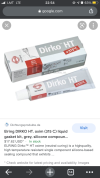Steve Hoelscher
True Classic
Bjorn, forgot to mention, the broken synchro crescent spring pad is not common. Most likely the result of a badly missed shift, or the transmission popping out of gear.
It would have been interesting to see how that broken pad could have jammed the slider in place. Thinking through how it works if the parts were still captive inside the synchro ring I don't see how it could have done that.
Usually, such things are accompanied by a bent shift fork or a blown up synhcro ring.
It would have been interesting to see how that broken pad could have jammed the slider in place. Thinking through how it works if the parts were still captive inside the synchro ring I don't see how it could have done that.
Usually, such things are accompanied by a bent shift fork or a blown up synhcro ring.

